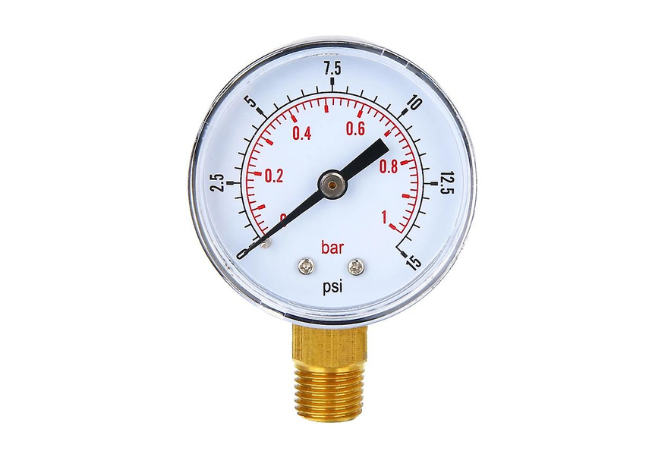Why Should You Use Insulation Testers for Electrical Equipment Maintenance?
- Get link
- X
- Other Apps
What Is an Insulation Tester?
An insulation tester is a specialised electrical instrument used to measure the insulation resistance of electrical circuits, components, and systems. It plays a crucial role in ensuring the safety and performance of electrical installations by identifying any insulation breakdowns or potential leakages. Insulation resistance is typically measured in megohms (MΩ), and a higher value signifies better insulation quality.
Unlike a traditional multimeter, an insulation tester applies a high-voltage DC signal—usually between 250V and 5kV—to determine the amount of leakage current flowing through the insulation. This makes it an ideal tool for detecting flaws that could lead to equipment failure or safety hazards.
What Makes Insulation Testing Important?
Electrical systems operate under various environmental conditions, including heat, humidity, and mechanical stress. These factors gradually degrade insulation materials, increasing the risk of electric shocks, short circuits, and fire hazards. Regular insulation testing helps detect these issues before they escalate.
The primary reasons for using insulation testers include:
- Preventing electrical faults caused by deteriorated insulation
- Ensuring equipment complies with industry safety standards
- Verifying the integrity of installations during commissioning
- Conducting preventive maintenance in industrial facilities
- Diagnosing intermittent faults in ageing systems
Where Are Insulation Testers Used?
Insulation testers are versatile instruments used across multiple sectors. From home wiring systems to large industrial plants, they help ensure electrical safety and functionality.
- Power distribution systems and electrical panels
- Motors, pumps, and generators
- Switchboards and switchgear
- Building maintenance in commercial properties
- Renewable energy installations, such as solar and wind farms
- Aerospace, marine, and transportation sectors
Key Functionalities of Advanced Insulation Testers
Today’s insulation testers come equipped with features that improve ease of use and testing precision. While basic models cover general applications, high-end testers provide data-rich results and are tailored for industrial-grade equipment.
Common functionalities include:
- Adjustable test voltages for different applications
- Automatic discharge of stored voltage for user safety
- Live circuit detection and warnings
- Large digital display with insulation resistance readings
- Real-time data logging and memory storage
- USB or wireless data transfer
- Battery-powered portability for on-site testing
Benefits of Performing Regular Insulation Tests
Routine insulation testing offers a range of technical and financial benefits. It not only helps detect problems early but also optimises equipment longevity and operational efficiency.
- Enhances operational safety for staff and equipment
- Minimises unplanned downtime caused by insulation failures
- Reduces maintenance and repair costs through early detection
- Improves overall power system efficiency
- Helps meet regulatory and compliance standards
- Provides a diagnostic baseline for future performance comparisons
Selecting the Right Insulation Tester
Choosing the correct insulation tester depends on your specific testing environment and application. Professionals should consider voltage requirements, equipment size, portability, and data analysis needs when selecting a model.
When choosing an insulation tester, consider:
- Voltage range required for your systems (250V to 5kV or more)
- Maximum measurable resistance (in MΩ or GΩ)
- Environmental ruggedness for field or lab testing
- User interface—digital vs. analogue
- Certifications and compliance with safety standards
Analogue or Digital: Which Type Is Better?
Both analogue and digital insulation testers have their place in modern testing environments. Your choice depends on the precision and data capability you need.
Analogue insulation testers
Known for their simplicity and instant visual feedback, analogue units are ideal for quick checks and rugged environments.Digital insulation testers
Offer higher accuracy, multiple features, and data storage. These are preferred in high-precision environments like industrial automation and R&D labs.
Interpreting Insulation Tester Readings
Understanding insulation tester results is crucial for determining whether the system is safe or requires attention. The readings vary depending on the equipment type, test voltage, and environmental factors.
- High resistance (above 1000 MΩ) – Excellent insulation condition
- Moderate resistance (100 MΩ – 1000 MΩ) – Acceptable for many systems, but should be monitored
- Low resistance (10 MΩ – 100 MΩ) – Potential degradation; further investigation recommended
- Very low resistance (below 10 MΩ) – Poor insulation; immediate repair or replacement needed
Best Practices for Using Insulation Testers
Correct handling of insulation testers ensures accurate readings and safe testing conditions. Follow these industry best practices during insulation testing:
- Disconnect the circuit or equipment completely from the power source
- Ensure all capacitors are discharged before testing
- Use insulated gloves and follow standard safety protocols
- Select the appropriate test voltage according to the manufacturer's guidelines
- Perform tests under dry conditions to avoid moisture interference
- Record the results and monitor changes over time
When Should Insulation Testing Be Performed?
Insulation testing is not a one-time process. It should be integrated into regular maintenance schedules and critical inspection procedures.
Ideal times for insulation testing include:
- During equipment installation and commissioning
- After scheduled shutdowns and repairs
- Before re-energising long-idled systems
- As part of routine facility maintenance
- Prior to high-voltage system upgrades
- When insulation failures are suspected
Conclusion
Insulation testers are indispensable tools for electrical diagnostics and maintenance. They safeguard systems against failure, enhance workplace safety, and help organisations comply with international standards. Whether you're a technician, engineer, or facility manager, incorporating insulation testing into your maintenance strategy ensures longevity and uninterrupted performance of your electrical infrastructure.
Choosing the correct insulation tester and applying best practices not only protects your investments but also creates a safer, more efficient work environment. With the right approach, insulation testing becomes a robust preventive measure rather than a reactive response.
- Get link
- X
- Other Apps




Comments
Post a Comment